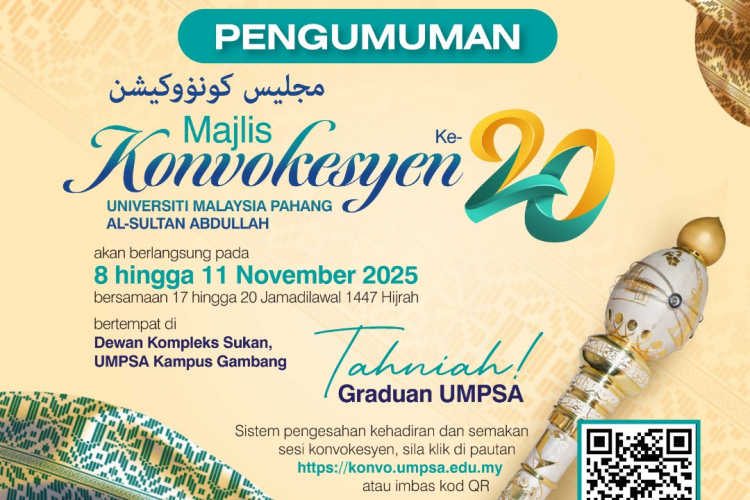Empowering Hands and Voices: Rethinking Technical English in Malaysian TVET
In the hands-on, high-demand world of Technical and Vocational Education and Training (TVET), students are taught to master the tools of their trade, measuring, welding, calibrating, and repairing. In Malaysia, certificate-level students under the Sijil Kemahiran Malaysia (SKM) programme form the majority of the technical workforce pipeline. These students will become the mechanics, machinists, welders, and technicians of tomorrow. However, amid the grinding of machines and the buzzing of circuits, a quieter yet more pressing issue arises: their struggle to communicate in English, particularly in technical and workplace contexts.
This article draws from a recent needs analysis conducted at Advanced Technology Training Centre (ADTEC) JTM, Kuantan. The study focused on the English language needs of certificate-level students and triangulated responses from three key groups: students, technical instructors, and industry employers. Although the research was localised, its findings are emblematic of a much larger issue affecting TVET institutions across Malaysia.
The Lingering Language Gap
The Advanced Technology Training Centre (ADTEC) Kuantan study revealed what many in the TVET community have long suspected: while students are effectively developing their technical competencies, their ability to express themselves in English, especially about technical processes, remains weak. For many, English is limited to classroom textbooks or basic translations of terms. It is seldom used actively or fluently in real-world scenarios, particularly during practical training.
This setting presents a fundamental contradiction. English is not merely a subject in today’s industrial landscape—it is the operating language of manuals, technical standards, safety procedures, and communication with international clients. The ability to follow instructions in English, write reports, and explain technical processes is no longer an added advantage; it has become a professional necessity.
Insights from Instructors and Students
One of the most striking observations from the study was the disconnect between English instruction and technical practice. Instructors admitted that although they use English keywords during training, they predominantly teach in Bahasa Melayu. This situation is primarily due to their limited training in English for Specific Purposes (ESP) and the lack of curriculum materials that integrate English into technical content.
The students, for their part, demonstrated a strong awareness of their limitations. In a post-training self-assessment, most students rated their receptive language skills, including reading and listening, as “moderate,” but awarded significantly lower scores for speaking, grammar, and technical vocabulary. When asked about their classroom experiences, they reported a considerable reliance on passive learning methods, such as note copying and vocabulary memorisation.
However, what stood out was the students’ willingness to improve. Many suggested more speaking opportunities, real-world communication tasks, and simulation activities, such as safety briefings, tool demonstrations, and group discussions in English. These practical suggestions align with their aspirations to work in genuine industrial environments.
Feedback from Industry: The Communication Bottleneck
Employers who participated in the study expressed a common concern. While SKM graduates possess commendable practical skills, they often struggle to articulate problems, describe technical tasks, or communicate effectively with English-speaking supervisors or clients. This poses a significant risk in industries governed by international safety standards and quality assurance protocols.
One employer from the automotive sector commented: “They know how to do the job, but they can’t explain what they’ve done. They struggle to fill out fault reports or brief the next shift in English.”
This communication bottleneck affects productivity, safety, teamwork, and professionalism. It undermines TVET’s objective of producing competent, confident, and workplace-ready graduates.
The Structural Cause: Language and Technical Training in Silos
At the root of the problem is the structural separation of language learning from technical training. In most TVET institutions, English is taught as a general subject, often with little relevance to what students learn in the workshop. Technical instructors, however, are seldom provided with the tools or training to incorporate the use of English into their daily teaching.
This fragmented approach is ineffective. Language cannot be learned in isolation—it must be tied to function and context. When students are trained to perform a task, they should also be trained to explain it, report on it, and document it—in English. Currently, that integration is missing.
A Case for Reform: Integration, Immersion, and Industry Input
The findings from ADTEC JTM Kampus Kuantan highlight an urgent need for curriculum reform, not only at one campus but across the national TVET system. English should no longer be regarded as an academic subject to be taught in isolation, but rather as a functional skill practised alongside technical learning.
This reform must involve several coordinated strategies. First, English needs to be integrated into technical modules. For instance, when learning to troubleshoot an engine, students should also practice describing the problem in English. When conducting a safety inspection, they should write the report in English. These tasks need not be complex; they need to be realistic and consistent.
Secondly, technical instructors must be empowered. They should receive short-term training in ESP pedagogy and be supported with bilingual teaching aids. They don’t need to become English teachers, but they require the confidence to model and encourage workplace English during hands-on sessions.
Thirdly, the industry should be involved in shaping communication tasks. Employers understand the types of reports, presentations, and interactions that graduates will encounter in the workplace. Their input can ensure that communication training reflects actual job demands, rather than theoretical ideals.
Looking Ahead: A National Priority
While this study was conducted at ADTEC JTM Kampus Kuantan, it highlights a systemic challenge. The communication gaps observed here are likely present in ILPs, community colleges, and other ADTECs across the nation. The solution must be of national importance and supported by policy, funding, and institutional commitment.
The Ministry of Human Resources and the Department of Skills Development (JPK) have already recognised the significance of employability skills. However, it is time to shift from policy statements to tangible action at the curriculum level. Language integration should be standard practice, not an innovation.
We should keep in mind that Malaysia’s goal of becoming a high-income, industrialised nation depends not just on machinery and infrastructure but also on the people who operate, interpret, and innovate these systems. Our TVET students have the skills to create; now, we need to empower them to take the lead.

Senior Lecturer
Centre for Modern Languages
Universiti Malaysia Pahang Al-Sultan Abdullah (UMPSA)
nyazi@umpsa.edu.my

Senior Lecturer
Centre for Modern Languages
Universiti Malaysia Pahang Al-Sultan Abdullah (UMPSA)
ariftesl@umpsa.edu.my

Education Service Officer
General Studies Department
Advanced Technology Training Centre (ADTEC) JTM, Kuantan
akhmal@jtm.gov.my
- 166 views










